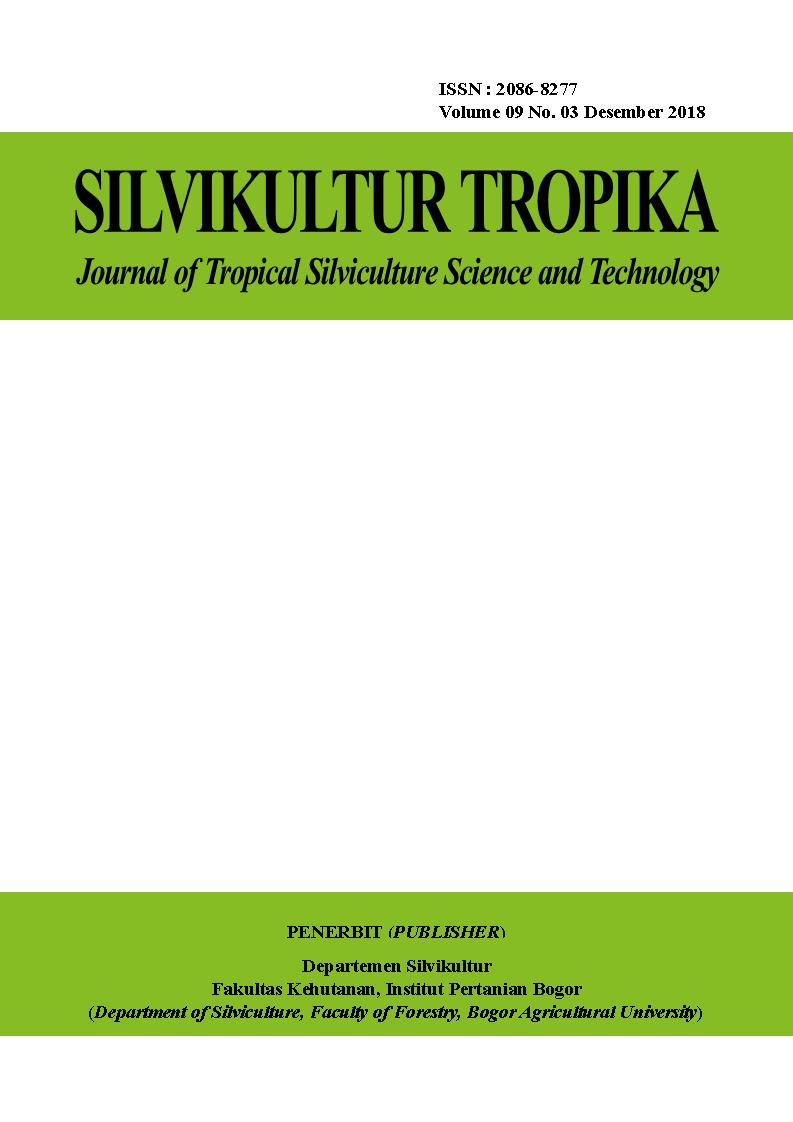Deteksi Potensi Fitotoksisitas Aluminium Pada Tanah Toksik Di Lahan Reklamasi Kawasan Hutan Dengan Bioassay Sorgum
Abstract
Aluminium (Al) phosphotoxicity is the most common constraint in acidic soil. Information on potential Al phytotoxicity is required in revegetation planning, monitoring of this information is generally done through laboratory analysis procedure in the laboratory that requires high cost and time. The purposes of this study were to test the method of quick detection of Al phytotoxicity with sorghum bioassay. Soil samples taken from post-gold mining land in Bolaang Mongondow Regency of North Sulawesi Province were analyzed for soil physical and chemical properties then planted with numbu varieties of sorghum with complete randomized design, sorghum growth performance response and its correlation with soluble Al and pH were analyzed and then the symptoms occured from Al-toxicity on sorghum were observed. Sorgum responds to Al-toxicity by showing symptoms of shortening and thickening of the roots and stunted growth performance. Sorghum growth performance has significant negative correlation with soluble Al concentration on soil, and soil acidity showed a stronger correlation. Al-phytotoxicity symptom in sorghum at pH below 3.7 begins to be clearly visible and easily observed, this distinct appearance difference makes sorghum potential to be used as bioindicator to detect Al- phytotoxicity on the soil.
Keywords: Aluminium phytotoxicity, sorghum, post-mining revegetation










